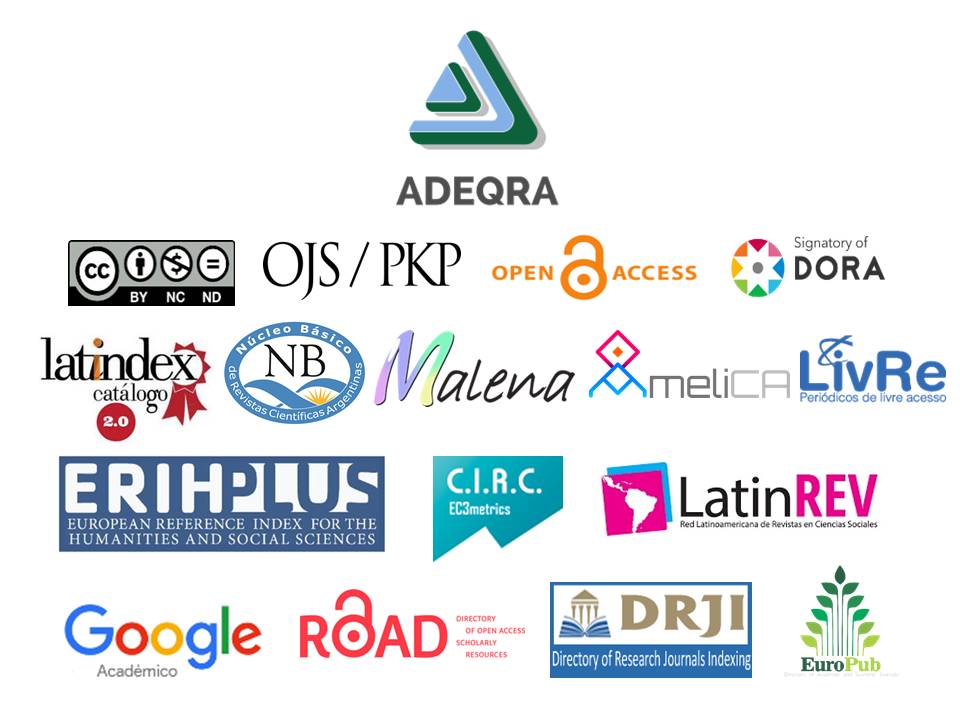Using Acetylsalicylic Acid as a Guiding Axis for Chemistry Teaching
Keywords:
acetylsalicylic acid, analytical chemistry, organic chemistry, active participationAbstract
This work presents a didactic proposal for teaching chemistry at university level that encourages participation and helps to understand the concepts of acidity, reactivity of functional groups in organic compounds, reaction mechanisms, spectroscopic techniques, and the quantification of active pharmaceutical ingredients in tablets. For this, we will use acetylsalicylic acid (commonly known as aspirin) as the main axis because of its history, synthesis, and quantification analysis. This proposal involves a laboratory practice which combine two different subjects: Organic Chemistry II and Analytical Chemistry along with the complement of virtual tools.
References
Bekerman, D. G. y Dankner, L. A. (2010). La Pareja Pedagógica en el Ámbito Universitario, un Aporte a la Didáctica Colaborativa. Formación Universitaria, 3(6), 3–8. https://doi.org/10.4067/s0718-50062010000600002
Blosser, P. (1990). The role of the laboratory in science teaching. Research Matters to the Science Teacher, 9001.
Corzo, M. A. C., Chacón, C. T. y Alcedo S. (2012). Los proyectos de aprendizaje interdisciplinarios en la formación docente. Revista Mexicana de Investigación Educativa, 17(54), 877–902.
Costa, V. y Del Río, L. (2016). La articulación en la enseñanza. 1° Jornadas Sobre Las Prácticas Docentes En La Universidad Pública. Transformaciones Actuales Y Desafíos Para Los Procesos De Formación, Secretaría de Asuntos Académicos, UNLP, 1997, 149–157. http://sedici.unlp.edu.ar/handle/10915/61283
Gagliardi, R. y Girodan, A. (2006). La historia de las ciencias: una herramienta para la enseñanza. Enseñanza de Las Ciencias, 4(3), 253–258. https://doi.org/10.5565/rev/ensciencias.5230
Li, Q., Bond, A. D., Korter, T. M. y Zeitler, J. A. (2022). New Insights into the Crystallographic Disorder in the Polymorphic Forms of Aspirin from Low-Frequency Vibrational Analysis. Molecular Pharmaceutics, 19(1), 227–234. https://doi.org/10.1021/acs.molpharmaceut.1c00727
Lion, C. (2020). Enseñar y aprender en tiempos de pandemia: presente y horizontes | Saberes y prácticas. Revista de Filosofía y Educación. Revista de Filosofía y Educación, 5(1), 1–8. http://revistas.uncu.edu.ar/ojs3/index.php/saberesypracticas/article/view/3675
Lorenzo, G., Reverdito, A., Blanco, M. y Salerno, A. (2012). Difficulties of undergraduate students in the organic chemistry laboratory. Problems of Education in the 21st Century, 42, 74–81.
Martínez Torregrosa, J., Domènech Blanco, J. L., Menargues, A. y Romo Guadarrama, G. (2012). La integración de los trabajos prácticos en la enseñanza de la química como investigación dirigida. Educación Química, 23(1), 112–126. https://doi.org/10.1016/s0187-893x(17)30143-x
Paur, A. B., Rosanigo, Z. B. y Bramati, P. (2006). Educación en la sociedad del conocimiento. I Congreso de Tecnología en Educación y Educación en Tecnología. http://sedici.unlp.edu.ar/handle/10915/19258
Rodríguez, W., Barbosa, R. H., Molina, L. M., Lizarazo-Camacho, A. M. y Salamanca, A. J. (2011). Actitudes hacia la ciencia: un campo de interés investigativo en la didáctica de las ciencias. Actualidades Pedagógicas, 1(57), 121–139.
Vialart Vidal, M. N. (2020). Estrategias didácticas para la virtualización del proceso enseñanza aprendizaje en tiempos de COVID-19. Educación Médica Superior, 34(3), e2594. http://scielo.sld.cu/pdf/ems/v34n3/1561-2902-ems-34-03-e2594.pdf
Zabalza Beraza, M. Á. (2012). Articulación y rediseño curricular: el eterno desafío institucional. REDU. Revista de Docencia Universitaria, 10(3), 17. https://doi.org/10.4995/redu.2012.6013
Downloads
Published
How to Cite
Issue
Section
License
Copyright (c) 2024 Ayelén Florencia Crespi, María Florencia Leal Denis, Mariana Hamer, Juan Manuel Lázaro Martínez

This work is licensed under a Creative Commons Attribution-NonCommercial-NoDerivatives 4.0 International License.



